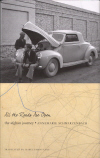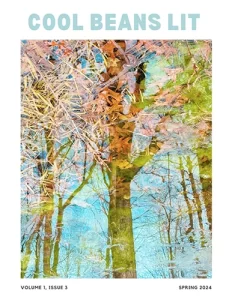All the Roads Are Open
Travel literature and memoir is a jumble of familiar tropes and themes, and All the Roads Are Open: the Afghan Journey certainly contains all of those recognizable elements and more. All the Roads Are Open is Annemarie Schwarzenbach’s collection of essays, stories, notes, and thoughts about her overland travels from Geneva to Afghanistan through Afghanistan’s Northern Road with herself, fellow writer Ella Maillart, and their third companion—a Ford with a mind and temperament of its own.
Travel literature and memoir is a jumble of familiar tropes and themes, and All the Roads Are Open: the Afghan Journey certainly contains all of those recognizable elements and more. All the Roads Are Open is Annemarie Schwarzenbach’s collection of essays, stories, notes, and thoughts about her overland travels from Geneva to Afghanistan through Afghanistan’s Northern Road with herself, fellow writer Ella Maillart, and their third companion—a Ford with a mind and temperament of its own.
Schwarzenbach’s description of their journey between 1939 and 1940 is a jumbled series of thoughts roughly following their travel itinerary—where each experience and insight strains to overtake the previous one. You get the sense that Schwarzenbach is a friend who has returned from a trip with so many exciting adventures to share that the stories begin to overlap in their telling. You are left with her need to make sense of her experiences. She shows a keen sense of the socio-cultural complexities of each country she visits, particularly Afghanistan, where she describes what she sees as large, sweeping cultural problematiques (“We seemed to be in a land without women!”) about women in Kabul and her horror about their relegation to the societal back corners of Central Asia:
There was little humanity in these ghostly apparitions. Were they girls, mothers, crones, were they young or old, happy or sad, beautiful or ugly? How did they live, what occupied them, who received their sympathy, their love or their hate?
Schwarzenbach balances these wide-sweeping themes with poignantly personal sketches of people she encounters—allowing you, her reader, to be drawn into her world and her experiences. In her essay “The Prisoners,” she recounts getting a flat tire in a “village near the Russian-Iranian border” and the two Russians, Ivan and Piotr, that fix the tire for her.
“Are you refugees?” I asked.
“But of course, refugees, religious Russians. Back there they wanted to make us renounce our faith, they wanted to put us in a cotton kolkhoz with miserable, half-starved nomads. So we ran away.”
“And here?”
Ivan and Piotr have malarial fever and live in an old caravanserai with a samovar and a golden icon. They’re in a bad way, homesick. Amiably they wish me a good journey . . . “On to Afghanistan?” they ask. “Perhaps it’s different there, better, a free land, a promised land?” And they wave . . .
Part of the literary genius behind Schwarzenbach’s writing is her ability to oscillate between these big, sweeping themes and small, portraiture-like sketches that successfully illustrate those themes. Her ability to humanize her themes by finding a person or scene to sketch helps readers unfamiliar with the area or the culture—and even those readers who might be familiar with them—to become emotionally vested in her journey and the people along it. Because you care about the people (the Ivans and the Piotrs or the veiled women of Kabul), you implicitly care about the theme that she’s writing to—and you appreciate the incredibly complex context that she captures.
However, All the Roads Are Open deserves another note of praise—specifically directed toward the translator and organizer of the text, Isabel Fargo Cole, and editor Roger Perret. Their dedication to organizing Schwarzenbach’s notes, essays, and thoughts into a coherent narrative—to say nothing of the translations—provides the solid, underlying structure to carry the reader through Schwarzenbach’s travels. Their notes on the ever-changing geography of names and places helps those who are unfamiliar with the geographic immediacies of the region.
All the Roads Are Open does what the best travel and memoir literature does— it makes you smile in recognition and shared experience. This is the secret smile you share with a fellow traveler who, separated by decades, has brilliantly described some of your own memories, and that’s certainly what All the Roads Are Open did for me. Mount Damavand, Tehran, Samarkand. The Steppes. The Little Girls With Their Chadors. The Car That Breaks Down Every 35 Miles. The memoir takes on these fantastically familiar traveling tropes and then invites readers to share these memories vicariously, but with a pointed poignancy necessary for her audience to examine the themes she encounters along her Road—to see Annemarie Schwarzenbach’s experiences as a snapshot of her vivacious life and a celebration of her indelible curiosity.





